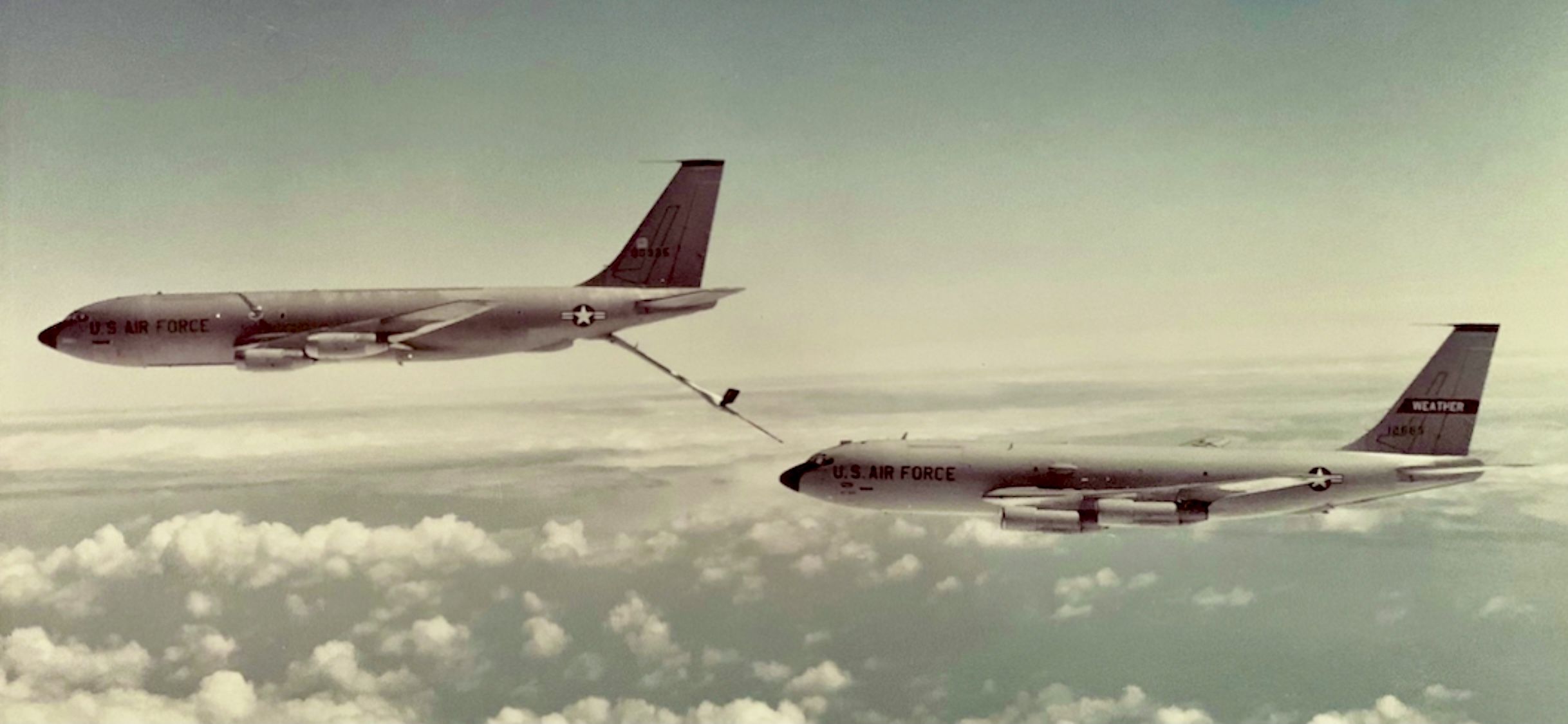All
 |
|
N12665 —
Inflight air refueling during operational mission in support of Nuclear Test Ban Treaty Safeguard D October 1979
Comments
That is a rare photo, of a rare sight.
How did you manage to take that photo?
Film Fotog !! Wish It Were Digital.
Fueler on left is closer in foreground than fuel recipient. PhotoShopped?
Doubters, look at Mr. Bills other photos. He is the real thing, IMO. Thanks for sharing your photos mrbill767.
No not photoshopped but would like to know how the person took the photo!
A member of the military or............................
A member of the military or............................
Why would someone "photo shop" a routine USAF aerial refueling? Looks like the boom operator on the tanker has has not yet "latched " to the aircraft being refueled. As for who took the photo, it was probably a crewman from the next aircraft waiting their turn at the pump.
The receiver is a WC-135 which accomplishes air sampling to detect and identify nuclear detonations. I was a tower controller at KMCC (McClellan AFB, Sacramento, CA) in the late 80s and the 55th WRS had four based there from the original 10. They flew under the callsign Lark (e.g. Lark 77). I had one runway 16-34 and we were almost always on 16. One foggy night one of them was returning to base and we were on 34 because it had lower minimums I think. Not only did the pilot bust minimums to land (there was evidence on the tapes) but on rollout, so used to making a LEFT turnoff he thought he saw his taxiway coming up on the left and turned hard left, smack into the muddy grass. Oops. It closed us down for the entire morning while they dug the aircraft out and towed it clear of the runway. No damage except to the pilot's ego..and career.
Photo of a photo?
The aircraft pictured are: KC-135A 60-0335 (left) and WC-135B 61-2665 (right).
-0335 was subsequently converted to KC-135Q, and thence to KC-135T. Was still
active 2017.
-2665 was converted to WC-135B and assigned to "Constant Phoenix" program, which
was tasked for air sampling following nuclear weapons tests. Airframe was
relegated to AMARC in Sep1996, and was still there in Jan2008. Converted to
OC-135B/W prior to going to AMARC?
-0335 was subsequently converted to KC-135Q, and thence to KC-135T. Was still
active 2017.
-2665 was converted to WC-135B and assigned to "Constant Phoenix" program, which
was tasked for air sampling following nuclear weapons tests. Airframe was
relegated to AMARC in Sep1996, and was still there in Jan2008. Converted to
OC-135B/W prior to going to AMARC?
Most of this information was gleaned from joebaugher dot com and airliners dot net.
Diana Rose, that is an optical illusion. Note that these are two near-identical airframes, then observe the apparent relative wing sweep. The photographer is lagging both aircraft enough that a straight line perpendicular to the line of flight starting just in front of the tail of the receiving plane would come very close to the camera. Note also the Star&Bars are at the same location on both planes, so if you observe the trailing edge of the wingtips obscuring the emblem of the receiving aircraft while the tanker wingtip trailing edge appears substantially forward of the emblem on the tanker. Good perspective, it is real.
The WC-135 is heading due South from Christchurch NZ accompanied (I think)by a cell of three KC-135 tankers. Photo is from one of the other tankers. The WC-135 flew over South Pole looking for possible debris from Alert 747 aka the Vela incident. It appears the WC-135 is moving from the pre-contact position into the contact position. The boom operator will fly the boom up and into the receptacle as the receiver gets closer.
ToddBaldwin3 is correct that this is a rare photo of a rare sight. I flew on 9 of the 10 AF WC-135Bs from 1970-72 and logged 300 hours as a weather crew member on 665 and have never seen a photo like this before. Most likely because there was never a third aircraft around when we were getting refueled. The WC-135Bs were converted from from cargo/troop carriers in the 60s and were modified for air refueling in the late 60s/early 70s. That came in handy for sampling radiation from above ground nuclear detonations in French Polynesia and other places around the world. Some of our crews logged in excess of 22 hours on a single flight in the southeast Pacific aided by 7-8 inflight refuelings. It made for a long day!
|
ACTIVITY LOG
Want a full history search for N12665 dating back to 1998? Buy now. Get it within one hour.
|
| Date | Aircraft | Origin | Destination | Departure | Arrival | Duration |
|---|---|---|---|---|---|---|
| No Recent History Data | ||||||
| Basic users (becoming a basic user is free and easy!) view 3 months history. Join | ||||||


Please log in or register to post a comment.